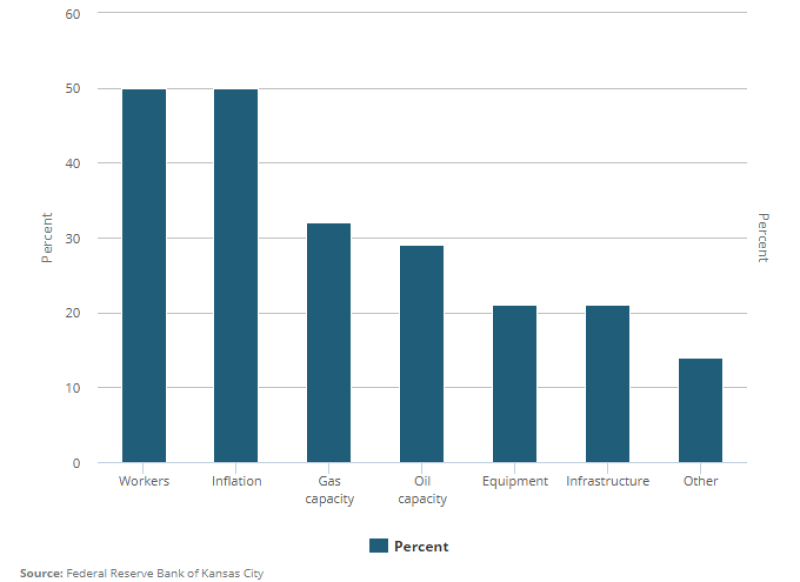The second-quarter energy survey results from the Federal Reserve Bank of Kansas City showed solid expansion in energy activity, as reported by 34 companies, in Colorado, Kansas, Nebraska, Oklahoma, and Wyoming, 43 counties in western Missouri, and 14 counties in northern New Mexico.
A striking change from a year ago was that the companies surveyed said the oil price needed to be an average of $69/bbl, with a range of $55 to $90, for a substantial increase in drilling to occur. This was up from last year’s $56 and $62 averages reported in the second and fourth quarters of 2017, respectively. The average natural gas price needed was $3.60 per million Btu, with responses ranging from $2.00 to $7.00.
Half of respondents reported that problems finding workers and cost inflation could limit near-term growth. Difficulties in filling low- and mid-skill positions due to a lack of available or experienced applicants were highlighted. About 30% also expected a lack of pipeline capacity for oil and natural gas to limit near-term growth.
Expected oil and natural gas prices in 6 months, 1 year, 2 years, and 5 years increased since the last quarter. The average expected WTI prices were $67, $70, $73, and $78/bbl, respectively. The average expected Henry Hub natural gas prices were $2.85, $2.90, $3.05, and $3.34 per million Btu, respectively.
Among the business risks identified, 65% of respondents anticipated a medium business risk from higher OPEC production levels, and more than 40% listed tighter regulation as a medium business risk.

Selected comments of survey participants:
“Permian Basin oil and gas pipelines are at or near capacity, which results in lower price differentials to index prices. The threat of production curtailments are driving our business plans in the near future.”
“We are concerned about the impact of tariffs on pipe supply and equipment.”
“Supply and demand for oil seem to be in fair balance. Currently we see a little more downside pressure than upside due to potential increases in supply from the US, Saudi Arabia, and Russia.”
“The large supplies of natural gas and good wells keep prices low. LNG will increase the values once they are on line.”
“Any gain we can make through proven technologies that allows us to grow in our efficiencies will translate towards improved income and higher wages. A happy workforce is a well-paid workforce.”
“Automation and big data will allow us to leverage our manpower, but we still expect modest increases in headcount.”


